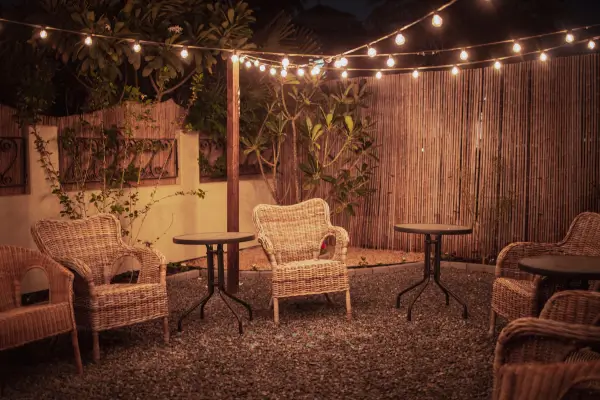Building a solar-powered outdoor lantern from recycled materials is a sustainable way to light up your space. It combines creativity, eco-friendliness, and functionality into one rewarding project.
This DIY guide helps you repurpose everyday items into beautiful, energy-efficient decor. From glass jars to tin cans, the possibilities are endless and budget-friendly.
With simple tools and a little effort, you can create a lantern that’s both stylish and practical. Let’s turn recycled materials into a glowing masterpiece today.
Start crafting and enjoy sustainable outdoor lighting with a personal touch!
Why Build a Solar-Powered Outdoor Lantern?
Before diving into the project, here are some key benefits of making your own solar-powered lantern:
- Eco-Friendly: Reduces reliance on traditional electricity and repurposes materials that might otherwise go to waste.
- Cost-Effective: Uses inexpensive or free materials, cutting down on costs compared to store-bought lanterns.
- Energy Efficient: Solar-powered lanterns charge during the day and provide illumination at night without additional energy consumption.
- Customization: Allows you to design a lantern that fits your outdoor aesthetic and personal style.
Materials You’ll Need
To build a solar-powered outdoor lantern, gather the following materials:
Recycled Items:
- A glass jar, tin can, or plastic bottle (serves as the lantern body)
- Old metal wire or a coat hanger (for hanging or support)
- Leftover paint or decorative fabric (for customization)
- Small wood pieces (optional for creating a lantern base)
Essential Components:
- A small solar-powered LED light or garden solar stake light (can be repurposed from an old solar lamp)
- Hot glue gun or strong adhesive
- Drill or hammer and nail (if working with tin cans)
- Sandpaper (for smoothing rough edges)
- Clear waterproof sealant (optional for added durability)
Step-by-Step Guide to Building Your Lantern
Step 1: Prepare the Lantern Body
- Clean the Container
- Wash and dry the glass jar, tin can, or plastic bottle thoroughly.
- If using a tin can, remove labels and sand sharp edges for safety.
- Customize the Exterior
- For a rustic look, paint the exterior using weather-resistant paint.
- Wrap twine or decorative fabric around the jar for an elegant touch.
- If using a tin can, punch holes in a pattern using a hammer and nail to allow light to shine through.
Step 2: Prepare the Solar Light
- Dismantle the Solar Light
- If repurposing a garden solar stake light, carefully remove the solar panel and LED unit.
- Ensure the solar panel is in working condition by testing it in sunlight.
- Modify the Light Base
- If the light is too large, adjust it by trimming the plastic casing to fit inside the lantern.
- Secure the solar panel to the lid of the jar or the top of the tin can using hot glue.
Step 3: Assemble the Lantern
- Attach the Solar Light
- Position the LED unit inside the lantern body, ensuring it is centered for even lighting.
- If needed, add a small wooden support or cardboard to keep it stable.
- Secure the Solar Panel
- Place the solar panel on top of the lantern where it receives maximum sunlight.
- Use waterproof adhesive or screws to fix it securely.
- Create a Hanging Mechanism (Optional)
- Use metal wire or a coat hanger to form a handle for hanging the lantern.
- Attach the wire to the sides of the jar or wrap it around the top of the tin can.
Step 4: Test the Lantern
- Charge the Solar Panel
- Place the lantern in direct sunlight for at least 6–8 hours to ensure a full charge.
- Test the Lighting
- Once fully charged, place the lantern in a dark room or outdoors at night to check if the LED light turns on automatically.
- Make Adjustments
- If the light is dim, ensure the solar panel is exposed to sufficient sunlight.
- If the lantern flickers, check the wiring and connections for stability.
Additional Customization Ideas
- Frosted Glass Effect: Use frosted glass spray on jars for a soft, diffused glow.
- Mosaic Design: Glue broken glass pieces or colored tiles onto the lantern exterior.
- Nature-Inspired Look: Decorate with dried flowers, leaves, or twigs for a rustic aesthetic.
- Patterned Light Projection: Punch specific shapes into tin cans for unique light patterns.
- Multicolor LED Options: Use a solar light with multiple color settings for a dynamic effect.
Maintenance and Longevity Tips
- Regularly clean the solar panel to remove dust and debris for optimal charging.
- Apply a waterproof sealant to protect against rain and moisture.
- Check the battery periodically and replace it if needed to maintain brightness.
- Store the lantern indoors during extreme weather to prevent damage.
- Repaint or reapply decorative elements to keep the lantern looking fresh over time.
Common Mistakes and How to Avoid Them
Insufficient Sunlight Exposure: Place the lantern in an area that receives direct sunlight for most of the day.
Weak Adhesive Use: Secure all components with strong, weather-resistant glue to prevent detachment.
Poor Drainage: If using a tin can, drill a small hole at the bottom to prevent water accumulation.
Overloading the Lantern: Avoid adding too many decorations that block the solar panel or dim the light output.
Final Thoughts
Building a solar-powered outdoor lantern from recycled materials is a simple yet effective way to incorporate sustainability into your daily life. Not only does this project allow you to repurpose household items, but it also helps conserve energy while adding charm to your outdoor space. Whether you’re creating one lantern or several to decorate your garden, the possibilities are endless.
With a few basic tools and a little creativity, you can design a beautiful and functional lantern that will illuminate your surroundings while reducing environmental impact. Start your DIY solar lantern project today and enjoy the benefits of sustainable lighting!



